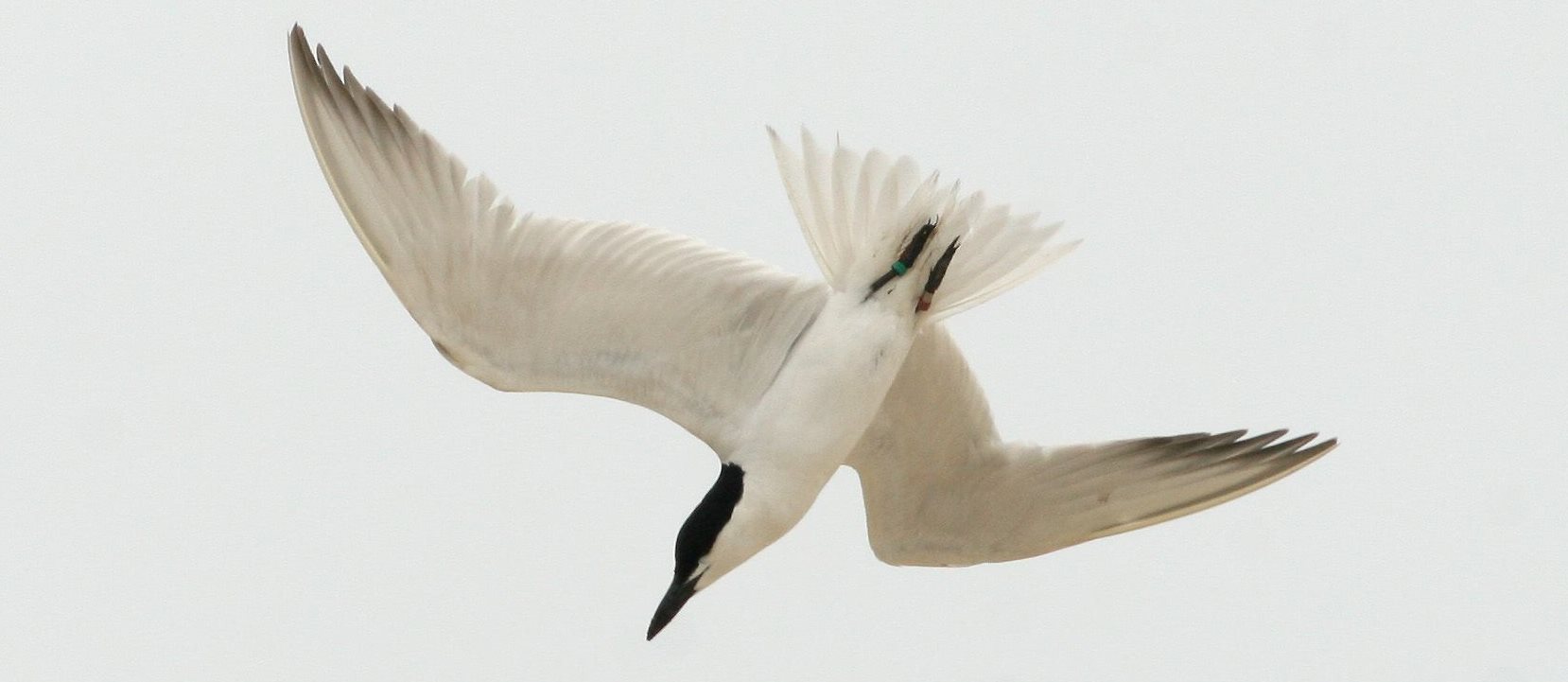← Back
Gull-billed terns keep their migration route and winter sites from year to year

Migratory birds may keep the same routes and the same nesting and wintering sites from year to year. Such species may be all the more fragile if environmental changes occur. Argos satellite telemetry enables researchers to be able to pinpoint those species, which may need more attention for conservation actions. Gull-billed terns and their migration, in particular, are studied for route fidelity.
The gull-billed tern (Gelochelidon nilotica) is a medium-sized migratory waterbird (about other shorebirds, see Spoon-billed sandpipers, long-range travellers, Black-tailed godwits’ different migration behaviours, Winds influence where male pectoral sandpipers will try and breed), for which behaviors are not very well known. It is found world-wide, with an endangered status on some continents, while populations seem to be stable elsewhere. In the Western part of North America, things are not clear – populations seem to be stable in Mexico, dwindling in USA, while periods of their annual cycle such as wintering are not well documented. In the western US, these terns breed in only 16 locations in southern California, USA and the Pacific coast and Gulf of California in Mexico.
Tracking gull-billed terns for their migration
Eleven gull-billed terns were equipped with 5-g solar powered Argos PTT over four breeding seasons at their nesting site in San Diego, California, USA. Five tags provided data over at least one complete migration cycle (one up to three years).
For the Fall migration, tracked terns began to depart San Diego in the early morning with moonrise late June through July as chicks became capable of distance flight. The Fall journey south began with terns traveling inland through the Tijuana River watershed, and then southwest over the Peninsular Mountain Range of Baja California to the Rio Colorado Delta.
There they stay for refueling and rest before continuing migration south along the western continental Mexico coastline to southern Sonora and northern Sinaloa (mean duration 20 days). In spring, the route is similar to the Fall route, starting mid-March to early May for a duration of two to 12 days.
More info about animal tracking with Argos
Site, route and stop-over fidelity
 |
 |
| Long-range tracks of the five gull-billed tern (left) and Locations during the stop-overs at the Rio Colorado Delta (Credit University of Oklahoma, from [Goodenough et al., 2019])
All the tracked birds, every year they were tracked, migrated to Mexico for winter through Baja California and the Rio Colorado Delta (both in Mexico) to end in a 250-km span of coastal wetlands ranging from Bahía Tóbari, southern Sonora south to Santa María-La Reforma, northern Sinaloa, Mexico. During both migrations, a stop-over was made by all birds at the Rio Colorado Delta before all tracked terns continued on their journey. For the spring migration, all tracked birds returned to their nesting site in San Diego. They thus show a strong fidelity to both breeding and wintering grounds, with individuals returning to San Diego each season to breed and then returning to previously used winter locations. Moreover, the systematic stop-over in Rio Colorado Delta shows a high degree of dependence on this location. These results suggest that the San Diego gull-billed tern population would probably not react well to environmental changes leading to loss of those habitats. However, they represent only a fraction of the North America population and an important next step for research is to track additional populations. This study was the first to use satellite telemetry to document North American gull-billed terns’ movements. Additional research focusing on populations in the Pacific Coast of eastern Mexico, Gulf Coast USA, and the USA Atlantic Coast would be necessary to better understand factors influencing survival and fitness of this species on the North American continent. Reference and links
Photo: A gull-billed tern diving (© Katharine S. Goodenough) |
|

